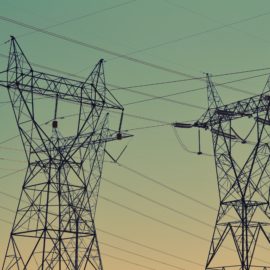

This article is an excerpt from the Shortform book guide to "Unsettled" by Steven E. Koonin. Shortform has the world's best summaries and analyses of books you should be reading.
Like this article? Sign up for a free trial here.
How much has the Earth warmed? Is extreme weather getting worse? Are climate scientists in agreement?
In Unsettled, a book about climate change, former energy industry scientist Steven E. Koonin doesn’t deny that the planet is warming and that humans are partly to blame. But, he challenges the evidence and prediction models, coming to some conclusions that not everyone shares.
Read more for an overview of Koonin’s book.
Overview of Steven E. Koonin’s Book Unsettled
Climate activists have misled the public into thinking there’s proof that our actions have led to global warming and possible climate catastrophe, according to former energy industry scientist Steven E. Koonin. According to these activists, we alone are responsible for recent global warming and must quickly curb carbon dioxide (CO2) emissions to avoid catastrophe. Koonin, however, argues that the facts about climate change are far from certain, contrary to activists’ claims.
In Unsettled, a book published in 2021, Koonin concedes that the climate is warming and humans are partially responsible for this warming. However, he contends that the evidence is overstated and climate scientists’ predictions are based on unreliable models. In turn, public misconceptions about human-induced climate change are common, and proposed solutions to climate change are unlikely to succeed.
Koonin served as the former chief scientist for the British oil and gas company BP, where he focused on renewable energy, and was undersecretary for science in the Obama administration, so he brings years of scientific experience into his discussion of climate science. And because his formal expertise lies in theoretical physics, rather than climate science, Koonin is unafraid to critique the received orthodoxy of climate scientists.
We’ll first discuss Koonin’s assessment of the basics of climate science. Next, we’ll discuss his allegations about climate science misconceptions in public opinion, before proceeding to his recommendations for repairing the state of climate science. Finally, we’ll examine his criticisms of proposed solutions to climate change and explore his recommended alternatives.
(Shortform note: Several scientists have been critical of Unsettled. For example, one critic argues that Koonin’s main claim—that key aspects of climate science remain unsettled—is dubious, as climate science has grown consistently stronger. In a similar vein, various climate scientists have criticized Koonin, alleging that he presents misleading claims out of context and even makes assertions that are demonstrably false. However, others have praised the book’s transparency, pointing out that Koonin’s consistent citations allow us to examine his claims for ourselves.)
Climate Science: The Basics
As we’ll see, though Koonin’s answer to the first question aligns with the scientific mainstream, his answers to the second and third questions both depart from the mainstream.
Question #1: How Much Has the Climate Warmed Recently?
Before assessing human impact on global warming, scientists naturally ask about the extent of global warming itself. In this respect, Koonin agrees with the scientific consensus: The Earth’s average surface temperature has risen by about 1°C (1.8°F) since 1850, with a particularly sharp increase beginning in 1980.
To understand climate data, however, Koonin asserts that we need to understand what “climate” means in the first place. Although many laypeople conflate climate with weather, Koonin defines climate as a region’s average weather across a long period of time—typically 30 years. This means we can only see climate change over longer timespans because variations in shorter timespans might not affect a region’s average weather in the long term.
In light of this definition, Koonin examines scientific findings showing the average surface temperature anomalies from 1850 to 2020. These anomalies are differences in the globe’s temperature from its average temperature over a longer term.
Average surface temperature anomalies rose 1.1°C (2°F) globally between 1900 and 2020, a rate of about 0.09°C (0.16°F) per decade. So, Koonin grants that the temperature has risen globally since 1900.
However, Koonin points out two further important patterns: First, although the graph shows a clear long-term trend, it fluctuates dramatically in short-term intervals. Because of this fluctuation, Koonin notes that changes over a few years don’t necessarily amount to climate change.
Second, the rate of temperature increase wasn’t uniform across 120 years—indeed, from 1940 to 1980, temperatures actually decreased an average of 0.05°C (0.09°F) per decade. As we’ll see in later sections, Koonin argues that this complicates the narrative that human influences have consistently led to warmer temperatures.
Question #2: How Much Are Humans Responsible for Recent Warming?
While Koonin agrees with the mainstream view about the extent of recent global warming, he disagrees when it comes to the cause of this recent warming. In particular, he contends that the scientific evidence doesn’t conclusively establish the extent of our influence, though best estimates suggest it’s relatively small.
To defend this assertion, Koonin points out that the Earth has historically experienced significant changes in average surface temperature anomalies. So, the causes must have been natural because the cycles occurred long before humans began impacting the climate.
Consequently, Koonin infers that we can’t rule out the possibility that recent warming is also partially due to natural causes. At the very least, he argues we must carefully consider the evidence to see whether—or to what extent—we’ve contributed to rising temperatures.
Koonin suggests that, when we do so, we’ll find that our impact on the climate is relatively small. To show as much, he analyzes this impact in two ways:
- The extent to which we’ve caused the climate to warm by increasing greenhouse gases in the atmosphere—Koonin acknowledges that we’re responsible for increasing greenhouse gases in the Earth’s atmosphere, which warm the climate.
- The extent to which we’ve caused it to cool by inserting reflective aerosols into the atmosphere—Koonin points out that other human practices actually result in the climate becoming cooler, which helps offset the warming from greenhouse gases.
Question #3: How Accurately Can We Predict Future Warming?
Koonin argues that climate scientists’ models don’t reliably predict future climate change, because they have three flaws:
- Grid sizes—Koonin argues that climate models’ grids are too large to account for smaller climate phenomena, which makes them less accurate. As such, Koonin claims these grids can’t account for weather-related phenomena such as storms and cloud coverage.
- The problem of initialization—Koonin argues that these models require data about initial weather conditions that we often don’t have access to. In turn, models depend on assumptions for many grid segments that aren’t empirically verified, making them less credible.
- The tuning process—Koonin notes that climate scientists “tune” their models to account for incorrect results, which makes them suspect.
Misconceptions About Climate Change
Koonin believes that misunderstandings about the science have led to three major public misconceptions about climate change.
Misconception #1: Extreme Weather Is Getting Worse
According to Koonin, climate activists portray bouts of extreme weather as the result of human-induced climate change. However, upon examining the data on record temperatures, hurricanes, flooding, and droughts, Koonin concludes that there’s no long-term trend of weather becoming more extreme.
To begin, Koonin disputes the US government’s 2017 Climate Science Special Report (CCSR), which claimed that record-high temperatures outpaced record-low temperatures in the last 20 years, indicating an increased frequency of record highs. Koonin found that the CSSR relied on so-called “running records” that counted a “record” whenever the temperature was higher than the previous high on record. So, initial years frequently recorded “record highs” while later years experienced fewer, as they had more years to compete with. In turn, both record highs and record lows become less frequent over time, as records became harder to set. Consequently, the claim that record highs were more frequent than record lows was only true in a relative sense, as record lows were occurring even less frequently than record highs.
To deliver more accurate results, Koonin compiled data illustrating the frequency of absolute high and low temperatures, which are simply the highest or lowest temperatures over the entire timespan. Using this data, he found no discernible trend in record-high temperatures since 1900, though record-low temperatures became less frequent. So, the CSSR’s claim about record high temperatures was at best misleading, if not outright false, according to Koonin.
In a similar vein, Koonin criticizes the US government’s 2014 National Climate Assessment (NCA), which reports that the intensity and frequency of North Atlantic hurricanes have been increasing since the 1980s. Once again, Koonin finds that this claim is misleading—upon examining the data on North Atlantic hurricanes dating back further to the 1940s, he says there’s no discernible long-term trend. In fact, any slight increase in hurricane activity from 1985 to 2010 is offset by a similar decrease from 1965 to 1985.
Indeed, Koonin notes that the IPCC’s fifth assessment report (AR5) confirms this result: In 2013, it reported low confidence in any long-term increase in hurricane activity. By extension, Koonin concludes there’s no evidence suggesting humans are responsible for an increase in hurricane activity—after all, we can’t be responsible for a trend that doesn’t exist.
Finally, Koonin also questions a related pair of weather phenomena: floods and droughts. As for floods, Koonin asserts that the IPCC’s AR5 reported low confidence in any global trends regarding the magnitude and frequency of floods. So, according to the UN’s own climate scientists, we aren’t sure whether floods are increasing globally.
As for droughts, AR5 echoes the same sentiment: There’s little evidence that droughts are becoming more prevalent worldwide since the 1950s. Koonin notes that the same is true in the US specifically, as average drought conditions have shown no discernible trend since 1890.
Misconception #2: Human Influences Are Making Sea Levels Rise
Koonin also casts doubt on the assertion that human activity is causing rising sea levels. Upon reviewing the scientific evidence, he contends that although sea levels are indeed rising, it’s unclear whether this rise is caused by human-induced climate change, rather than natural variation.
To put the recent rise in sea level in context, Koonin examines the average sea level over the last 400,000 years. He finds that the sea level repeatedly decreased by about 120 meters over 100,000 years, then rapidly rose by about 120 meters over the next 20,000 years. So, the last 400,000 years have seen cycles of sea level changes that occur because shifts in the Earth’s orbit and tilt cause glaciers to either melt or grow larger.
Because the sea level rises and falls across these cycles, Koonin argues that we shouldn’t conclude that the recent rise in sea level is the result of human activity. Rather, he proposes comparing the sea level rise in recent decades—when human impact on the climate became most stark—with the sea level rise at the beginning of the 20th century when our impact was negligible. In doing so, he aims to see whether there’s been any significant change in sea level rises that coincides with increased human impact on the climate; if so, that would provide evidence that human influences are responsible for recent sea level rises.
Accordingly, Koonin cites the IPCC’s findings that the sea level rose an average of 1.7 mm per year from 1901 to 2010. He also concedes that, between 1993 and 2010, the sea level rose an average of 3.2 mm per year. So, the sea level has indeed risen at a greater rate in recent decades. Yet, Koonin observes that periods of relatively higher sea level rises also occurred before humans were actively affecting the climate.
So Koonin concludes that we can’t rule out natural variation as the driving factor behind the recent increase in sea level rises. After all, similar rises occurred before human influences played a role, so it’s entirely possible that recent rises are also the result of natural factors.
Misconception #3: Climate Change Will Lead to Catastrophe
By appealing to the very models that some use to support these predictions, Koonin argues that climate change won’t cause widespread death, famine, or economic catastrophe.
First, Koonin disputes economist Michael Greenstone’s projection that climate change will cause an additional 85 deaths per 100,000 people by 2100. On the contrary, he argues that Greenstone’s concern about climate-related deaths is overstated.
Next, Koonin criticizes a 2019 New York Times article reporting that climate change has contributed to global food shortages, according to an IPCC report. In response, Koon argues that the IPCC’s report doesn’t justify claims of food shortages. The IPCC’s report justifies only the modest claim that climate change has had a slight impact on global food yields.
Finally, Koonin casts doubt on the US’s 2018 National Climate Assessment (NCA), which reported that climate change would substantially harm the US economy by 2100, arguing that climate change will have a nearly undetectable effect on economic growth. Because the economy is otherwise projected to grow at a rate of 2%, Koonin predicts that climate change will instead slow that growth to 1.96%. In other words, climate change will have a nearly undetectable effect on economic growth.
Where Climate Science Went Wrong and How to Repair It
Koonin attempts to diagnose the root of this problem and propose a remedy.
The Parties That Distort Climate Science
Although Koonin argues that an array of parties bear responsibility for misrepresenting climate science, we’ll focus on three main ones:
- The media—Koonin argues that the media’s climate stories often sacrifice accuracy in exchange for engagement.
- Politicians—Koonin argues that politicians oversimplify complex issues to instill passion and loyalty in voters to win elections.
- Climate scientists—Koonin argues that climate scientists face external pressures to pump up their findings.
How to Repair Climate Science
Koonin argues that despite the grim state of climate science, it’s possible to improve scientific reports on climate change and their portrayal to the general public. In particular, he proposes concrete strategies for making climate science more transparent and accessible to the layperson.
To begin, Koonin advocates third-party review of climate reports themselves—specifically, the US’s NCA reports and the UN’s IPCC reports. In order to strengthen confidence in these reports and expose possible flaws, Koonin recommends a “Red Team review,” in which an external group of scientists scrutinizes the reports and presents possible counterarguments to their findings. Such a review, Koonin notes, is common practice in national security reports, so it has precedent in other consequential fields.
With respect to climate reports, Koonin argues they have two features that justify a Red Team review. First, climate reports are written under the auspices of self-interested governments, which suggests that bias could infiltrate them; a Red Team review could help mitigate this concern. Second, unlike papers published in academic journals, the NCA and IPCC reports aren’t reviewed by a referee who can require changes—although referees do review the reports, the original authors have the authority to overrule referees’ comments. So, a Red Team review could help check the authors’ unrestrained authority.
Beyond improving climate reports themselves, Koonin also suggests ways to increase public understanding of climate science. Because most laypeople learn about climate change from the media, Koonin argues that they need to learn to distinguish between reliable and unreliable climate reporting. He lists various warning signs indicating that a particular climate story in the media is unreliable:
- Referring to climate scientists as “deniers” or “alarmists”
- Conflating climate and weather
- Reproducing statistics without context
- Failing to provide hard data
By heeding these warning signs, Koonin suggests that the public can better determine whether a media report is reliable.
Possible Responses to Climate Change
Because of the distortion of climate science, Koonin argues that many governments have endorsed impractical responses to climate change.
The Impracticality of Eliminating Carbon Emissions
As Koonin notes, one straightforward response to climate change involves eliminating carbon emissions altogether. Indeed, the IPCC claims this response is actually necessary to meet the goals of the Paris Agreement—an international climate accord among 196 nations that aims to keep warming below 2°C by 2100. Koonin, however, argues that eliminating carbon emissions by 2100 is practically impossible because growing energy demands preclude such a radical overhaul of the energy system.
To make his argument, Koonin first cites projections that worldwide energy demands will increase by 50% by 2050. Moreover, fossil fuels are still projected to account for 70% of global energy by 2050. Because fossil fuels—which emit CO2 when burned—are expected to play a crucial role in fulfilling these energy needs, Koonin reasons that eliminating CO2 emissions altogether would require transforming the energy system.
Next, he argues that such an overhaul would require emissions constraints that are enforced worldwide; otherwise, high-emissions activities would relocate to areas that lack these constraints. However, this would require impoverished countries to voluntarily stunt their growth by forswearing much-needed emissions—emissions that could otherwise help address pressing problems like housing, transportation, and water sanitation.
So, given the degree of self-sacrifice required, Koonin concludes that a globally coordinated effort to eliminate carbon emissions is unlikely to occur. Rather, he claims that fossil fuels will continue to play a pivotal role in meeting our energy needs for the foreseeable future, making the transition to carbon neutrality impossible.
Alternative Responses to Climate Change
Because of his skepticism about our ability to curb emissions, Koonin considers alternative responses to climate change. In particular, he argues that we should consider geoengineering and adaptation in order to address climate change.
First, Koonin examines geoengineering—active techniques designed to artificially reduce the earth’s temperature—and argues that two forms of geoengineering are worth considering: Solar Radiation Management (SRM) and Carbon Dioxide Removal (CDR).
Broadly speaking, SRM involves making the earth more reflective to decrease the heat absorbed at its surface. According to Koonin, the most promising form of SRM is aerosol injection, which involves injecting aerosols into the stratosphere to create a reflective haze. Specifically, he claims we could insert a safe amount of hydrogen sulfide into the stratosphere at a relatively low cost, which would offset the warming caused by our CO2 emissions.
Nonetheless, Koonin concedes that this form of SRM has several disadvantages. In addition, climate models suggest that SRM could have adverse effects on the climate, which could be worse than the rising temperature itself.
So, Koonin turns to CDR as another promising form of geoengineering. Put simply, CDR involves removing CO2 from the atmosphere and storing it elsewhere. Koonin argues that this form of geoengineering has multiple advantages. Moreover, because CDR involves restoring the atmosphere to its natural level of CO2 concentration, it would likely have few adverse effects on the climate.
However, Koonin admits that we currently lack the infrastructure to use CDR on a meaningful scale. In particular, he asserts that removing even 10 gigatons (10 billion tons) of CO2 from the atmosphere—about one-third of our annual emissions—would require an infrastructure of similar size to our current fossil fuel infrastructure. So, although CDR could help mitigate climate change in the distant future, Koonin suggests that it isn’t yet a viable approach.
In light of these challenges for geoengineering, Koonin argues that adaptation will be our primary response to climate change. After all, adaptation has been our response to hostile environments throughout history, as we learned to survive in Arctic and tropical regions by adapting. Similarly, Koonin suggests that adaptation will overshadow our efforts to either mitigate climate change by curbing emissions or negate its effects through geoengineering.

———End of Preview———
Like what you just read? Read the rest of the world's best book summary and analysis of Steven E. Koonin's "Unsettled" at Shortform.
Here's what you'll find in our full Unsettled summary:
- That humans are only partially to blame for the warming climate
- Why the proposed solutions to climate change are unlikely to succeed
- Alternative responses to climate change and how to improve understanding






